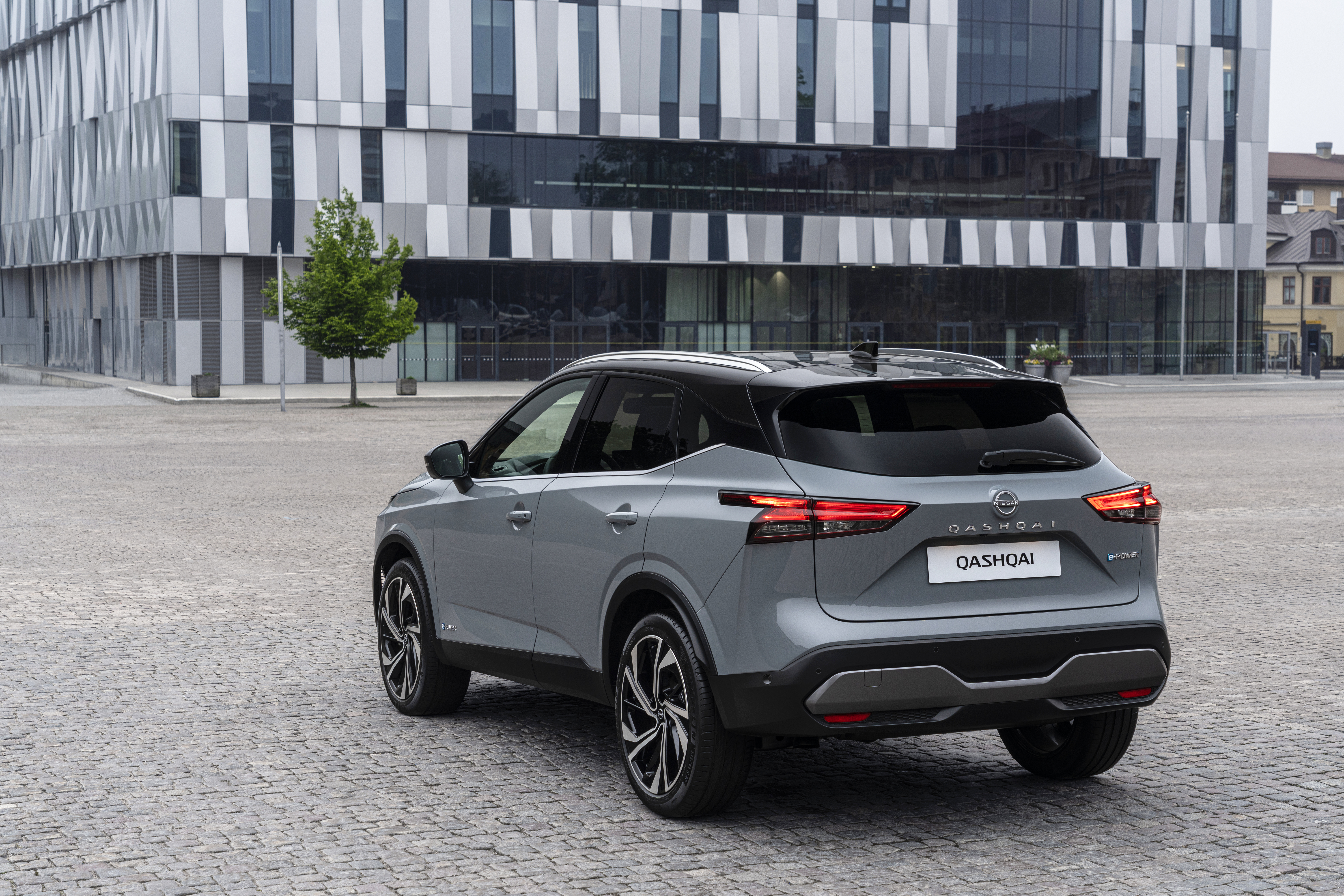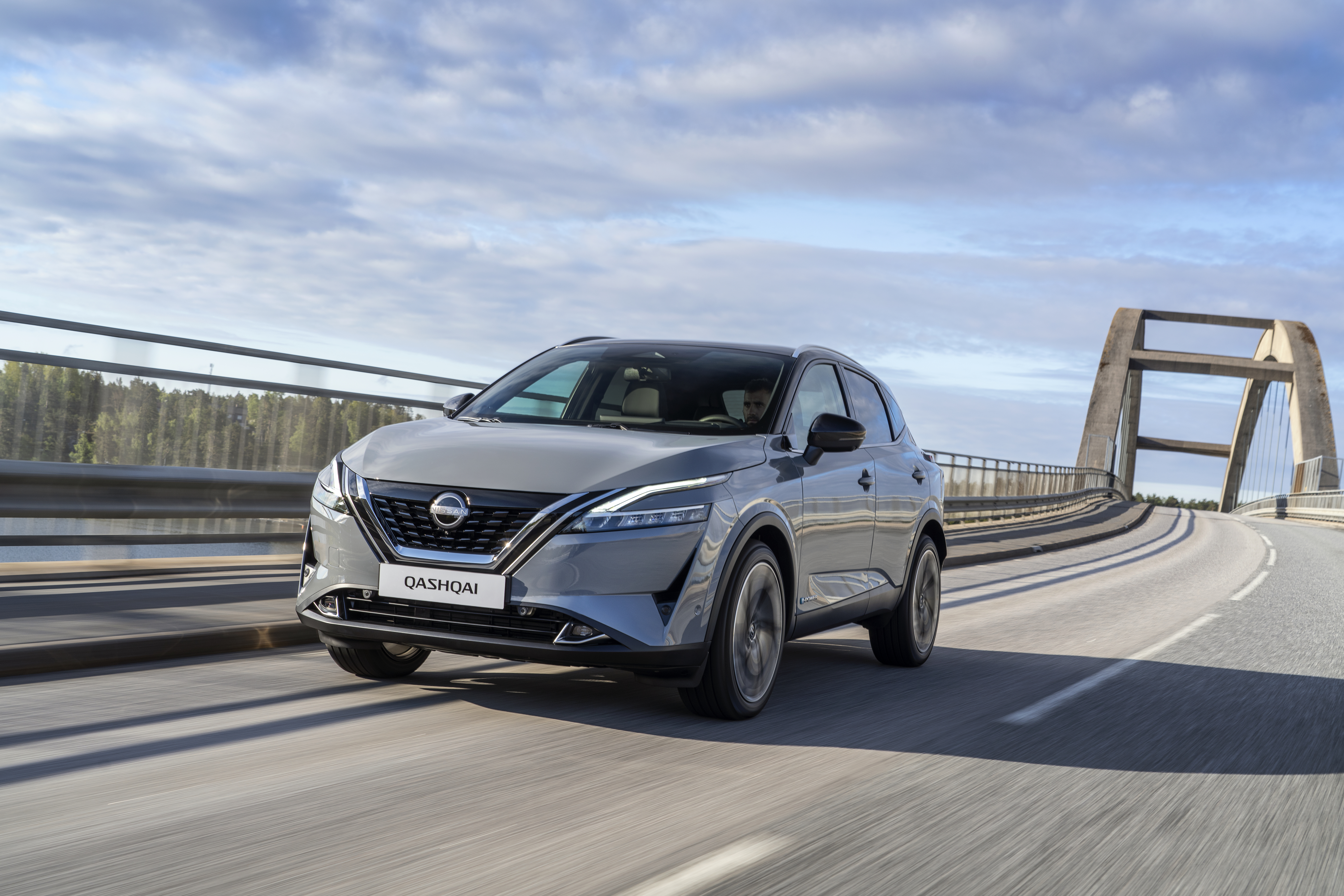First Drive: The Nissan Qashqai e-Power adds further appeal to this crossover
Does a hybrid version of Nissan’s best-seller make it more attractive? Ted Welford heads to Stockholm to try it out.

What is it?

Love it or hate it, the Nissan Qashqai has been an automotive icon in recent years, helping to kickstart the exceptionally lucrative crossover segment. An enormous British success story, 5.5 million Qashqais have been produced in Sunderland since 2006, with the latest models also designed in London and engineered in Cranfield. It’s as ‘British’ as they come.
The third-generation Qashqai launched last year, debuting with mild-hybrid engines, but Nissan is now expanding its appeal further, with the launch of a new e-Power version. Bringing full hybrid technology (though Nissan doesn’t actually call it a hybrid), it further electrifies Nissan’s line-up, but is it worth choosing?
What’s new?

First launched in 2016 in Japan, the Qashqai is Nissan’s first ‘e-Power’ model in Europe, and uses a different setup than other hybrids on the market. That’s because rather than running either on petrol or electric, this system uses the petrol engine as the way of generating electricity, helping to make it drive more like an EV. In fact, Nissan strongly reckons the Qashqai e-Power will be the ‘last car before someone goes electric’.
This electric motor is then the sole power source driving the wheels, which does make it quite different to other hybrids on the market. Powertrain aside, there aren’t too many differences, though the e-Power benefits from the new, larger touchscreen that’s recently been rolled out across the rest of the Qashqai line-up.
What’s under the bonnet?

Mild-hybrid Qashqais use a 1.3-litre petrol engine, but a new 1.5-litre three-cylinder petrol is adopted for the e-Power. Combined with an inverter and electric motor, the total output is 187bhp and 330Nm of torque, which is delivered to the front wheels. If you want all-wheel-drive, you’ll need to stick with the regular mild-hybrid.
It’s by far the swiftest Qashqai on sale, with 0-60mph taking 7.7 seconds, and able to accelerate to a top speed of 105mph. We suspect the efficiency gains will be of more interest to customers, though, and Nissan claims up to 53.3mpg and CO2 emissions of 119g/km. With a big sales target for the Qashqai being fleet, those reduced CO2 emissions will be welcome (the regular car emits around 145g/km), while it’s also around 9mpg better on fuel.
What’s it like to drive?

Nissan’s pledge to make the Qashqai feel more like an EV is far from just marketing, as for the bulk of the time it does feel like you are driving something electric. It’s relatively responsive (if not quite so much as a conventional EV) and feels particularly quiet on the move as well. Really put your toe down and the engine does make itself heard, however.
The e-Power also carries over Nissan’s ‘e-Pedal’ from its Leaf EV, essentially a sharp regenerative braking system that lets you drive it for the most part with just a single pedal; as you ease off the accelerator pedal the car automatically slows down and that adds to the ‘electric’ experience. Nissan’s ‘ProPilot’ semi-autonomous driving features also really take the stress and hassle out of busy and congested traffic, with its systems being among the best on the market.
How does it look?

Bar some relatively subtle e-Power badging and a slightly different grille pattern, this looks just the same as any regular Qashqai, and though views are always subjective we reckon that’s no bad thing.
Nissan has tended to err on the side of caution with the Qashqai’s design (when you have such a loyal customer base, it’s best to tread carefully), but this crossover has a certain quiet elegance about it. Sharp LED headlights with a neat signature give it plenty of presence on the road, while the neat crease lines give it some extra flair too. If design is important, you’re better off choosing the top-spec models – particularly the range-topping Tekna+ we’re trying here – with its large alloy wheels and two-tone paint scheme adding plenty of flair to it.
What’s it like inside?

One of the main steps up on this latest Qashqai is its interior, and it certainly feels like a welcome leap upmarket, if not quite encroaching on premium territory. The material quality is good, particularly on the top-spec cars, which get quilted leather seats and additional leather elements on the door cards, for example.
The new 12.3-inch touchscreen is a welcome improvement too, giving the cabin a more modern feel, and though not the best system on the market, it’s easy to use and clear. The only slight gripe we have is with the gear selector, which just feels quite cheap to both look at and operate.
The Qashqai also continues to excel when it comes to interior space, with a generous size boot and decent levels of rear-seat space. The legroom in the back isn’t all that fantastic, however – a Ford Kuga Hybrid offers more in the way of space here.
What’s the spec like?

You’ll pay around £2,000 more for the e-Power over the equivalent mild-hybrid automatic model, with prices kicking off from £32,950 and rising to £40,980 for the top-spec Tekna+.
The Qashqai is generally very well-equipped, with the Acenta Premium coming with 18-inch alloy wheels, dual-zone climate control, an eight-inch touchscreen, reversing camera and keyless entry all included.
It could, however, be worth upgrading to the £35,120 N-Connecta version, which brings the larger touchscreen, digital dials, an all-round parking camera and wireless Apple CarPlay and Android Auto.
Verdict

The addition of this e-Power hybrid powertrain is certainly welcome in the Qashqai, bringing a more pleasant driving experience and reduced running costs compared to the standard car. With generous equipment levels and a smart design, it could prove a great choice for those looking for something electrified that aren’t quite ready for an EV.
The only sticking point perhaps is the £2,000 increase in price over the regular mild-hybrid Qashqai, which may be hard to justify considering the regular car is hardly inefficient in its own right.





